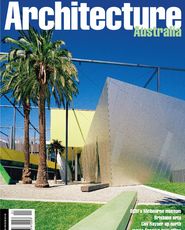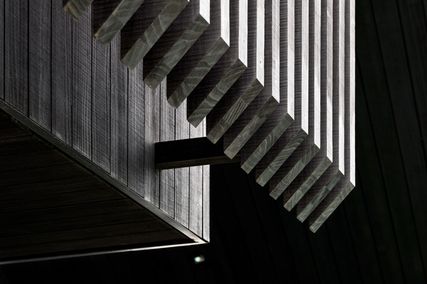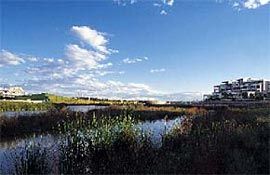
Master Planning Award. Millennium Parklands. This view looks south over the Hill Road corridor freshwater wetlands. The wetlands also won the Rehabilitation and Conservation Award. Photo Patrick Bingham-Hall.
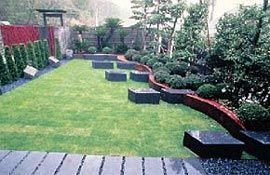
Outstanding Award, Residential Award. Australian Consul General’s Residence, Kobe, Japan by Taylor Cullity Lethlean. Photo courtesy Stonehenge Homes.
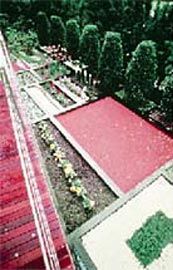
Another view of the Australian Consul General’s Residence.
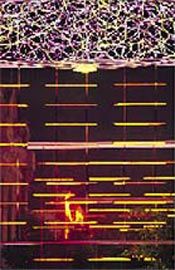
Landscape Art Award. Dixon Street, Haymarket, Chinatown by Hassell in association with City Projects, City of Sydney and Peter McGregor. Photo Brett Boardman.
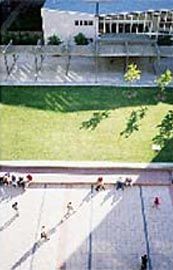
Award of Merit. University Mall by Context Landscape Design in association with Bligh Voller Nield and NDY Light. Photo Context Landscape Design.
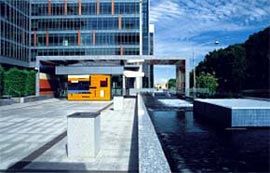
Public Spaces, Award of Merit. Commonwealth Law Courts Forecourt, Melbourne by Hassell. Photo Trevor Mein.
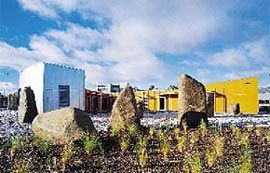
Building Context Award. Riawunna Aboriginal Studies Centre, University of Tasmania by Urban Initiatives and Sinatra and Murphy landscape architects in association, and Peter Elliott Architects. Photo John Gollings.
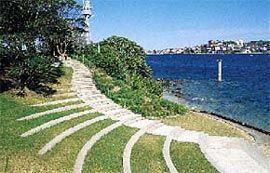
Public Open Space Award. Wharf Area Amphitheatre, Bradley’s Head, Sydney by CAB Consulting. Photo Craig Burton.
New liaisons between architecture and landscape are appearing in a number of leading architectural journals. Whether it is the new extraordinary forms derived from the integration of architecture, infrastructure and landscape discussed in Daidalos 73 Architecture goes Landscape, or the strange hybrids of landscape and building evident in Quaderns 217 and the MVRDV Dutch Pavilion at the Hanover Expo, “landscape” is the term used to describe these new forms of architecture.
The National Awards given by the Australian Institute of Landscape Architects (AILA) in 2000 confirm that landscape architecture in this country has reached an interesting level of maturity. Prior to the Sydney Olympics, Australian practice was nationally known as a maturing profession with well-developed skills ranging from design and planning to sophisticated collaborative work with artists and engineers. Now this high calibre work is receiving international attention. Apart from the competent conventional work, there are also distinctly Australian design genres emerging. These can loosely be described as artful parody, understated designs revealing deep relationships with the Australian landscape, and Australian cosmopolitanism (see Kerb 6, 1999).
Designs exploring parody can be found in the work of a group of Melbourne designers, predominantly associated with RMIT, but also including the iconoclastic work of Richard Weller from Western Australia. The understated designers are those “quiet achievers” who work with a perceived “genius loci”, or who are working to rehabilitate the damage of 200 years of European presence in Australia. The Australian cosmopolitanism derives from three coalescing phenomena: a maturing cultural pluralism; a long tradition of healthy scepticism about strident certainties; and a much travelled population.
These three genres were all evident, in various forms, in the work that received AILA 2000 Awards. Inevitably the awards were dominated by the Sydney Olympics. The Millennium Parklands, with their artful design for habitat restoration and water and toxic waste management, was one example of high standard design and planning work.
However, the key role played by landscape architects in the evolution of the total suite of Olympic sites goes beyond single projects. Landscape architects have had essential roles, from the early master planning in 1995, through the master plan design concept, to the ultimate realisation of advanced design concepts celebrated by visitors, athletes and a global television audience. To acknowledge all involved, the President’s Award went to the Olympic Coordination Authority – for creating a bureaucratic space in which significant master-planning enabled the implementation and integration of the varied contributions from a large number of landscape architects. This award confirms the sophistication and cosmopolitanism of the profession in successfully integrating a complex program of requirements for a global Olympic event.
Australian cosmopolitanism in landscape design, however, is far more pervasive than the Olympic projects. The Outstanding Award of Landscape Excellence went to Taylor Cullity Lethlean’s design for the garden of the Australian Consul General’s residence in Kobe, Japan. This work conveys a confidence and certainty about Australian landscape design. A level of cosmopolitanism comes through in the combination of the design’s sensitivity to its Japanese context and the playful Australian cultural references interwoven through planting design and spatial modulation. This project has a significant ambassadorial role for the Australian profession.
Cross-cultural approaches were also evident in Hassell’s submission for Dixon Street in Sydney’s Chinatown. Artist Peter McGregor’s lighting design is a complex work involving deep cultural interpretation.
Culturally-specific lighting designs create unusual landscape volumes, and subtly explore time in a way that will be understandable to the many members of the Asian community who frequent the area.
Sophistication in the profession is also reflected in collaborations with architects, infrastructure designers and artists, where “topological landscapes” (Daidalos 73) show landscape, architecture and infrastructure merging into seamless new urban forms.
This is evident in the successful collaboration between Context Landscape Design and Bligh Voller Nield in their design for the University Mall. This major entry to the University of New South Wales is elegant and minimal. Together with the associated buildings, it seamlessly unifies a formerly confusing campus. Hassell’s neo-modernist resolution of the exterior spaces around the Commonwealth Law Courts is similarly restrained and elegant.
Another form of collaboration, realised in an equally sophisticated design for the Riawunna Aboriginal Studies Centre, is that between a Tasmanian Aboriginal community, landscape architects Urban Initiatives and Sinatra and Murphy, and Peter Elliott Architects. The relationship between building and landscape – each complementing the other but maintaining autonomy – produces a strong response which moves expressions of Aboriginality into a contemporary context without resulting in predictable cliches.
Work by understated Australian landscape designers – demonstrating an intimate engagement with the details of landscape including a profound commitment to the “spirit of place” – was also included in the submissions. The Wharf Area Amphitheatre at Bradley’s Head, designed by Craig Burton, evokes a particular landscape aesthetic, consistent and harmonious with bushland Sydney Harbour sites. Modest and restrained, with high sensitivity to context, this is a further development of the fine tradition of the Sydney school of landscape design.
The understated approach to Australian landscape design was also evident in the Flinders Ranges National Park project by Taylor Cullity Lethlean. Here rigorous documentation and highly detailed site-specific analyses transferred design skills to park rangers on the ground. This emphasis on the need for site-specific analyses contrasts with state of the art environmental planning orchestrated at a distance through remote sensing and large scale mapping.
Embedded in much of the award winning work is a determined effort to find ways of achieving sustainable designs, whether it is the use of ESD appropriate materials or the technological sophistication deployed to address toxic urban sites – an issue associated with so many contemporary redevelopment sites. These explorations reflect the hidden work associated with landscape design.
The 2000 Awards show that the new partnerships between landscape architects, architects, artists and engineers, which are creating such exciting urban interventions in European cities, are also emerging in Australia.
Helen Armstrong is the inaugural professor of landscape architecture at Queensland University of Technology, and was jury chair for the AILA Awards.

